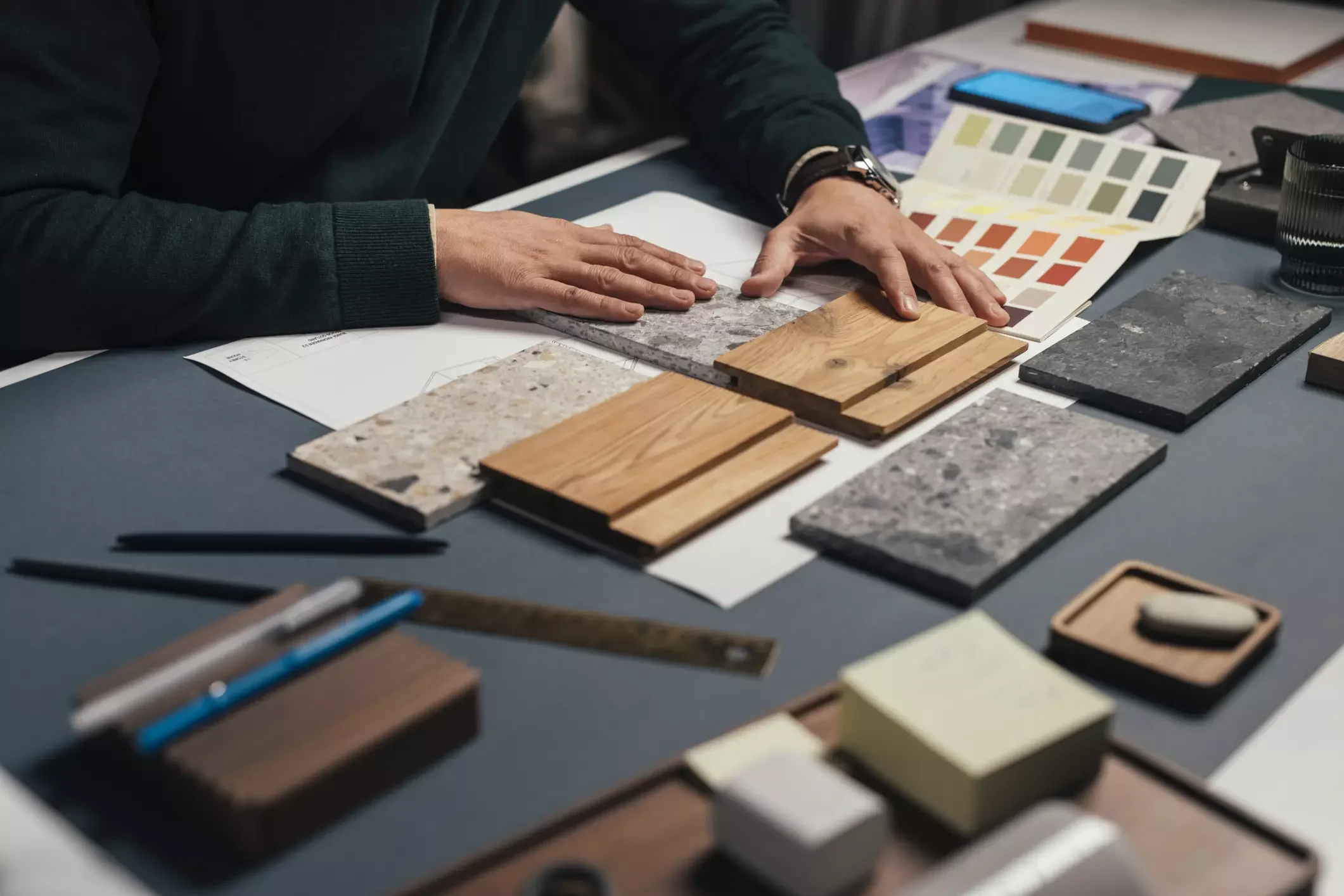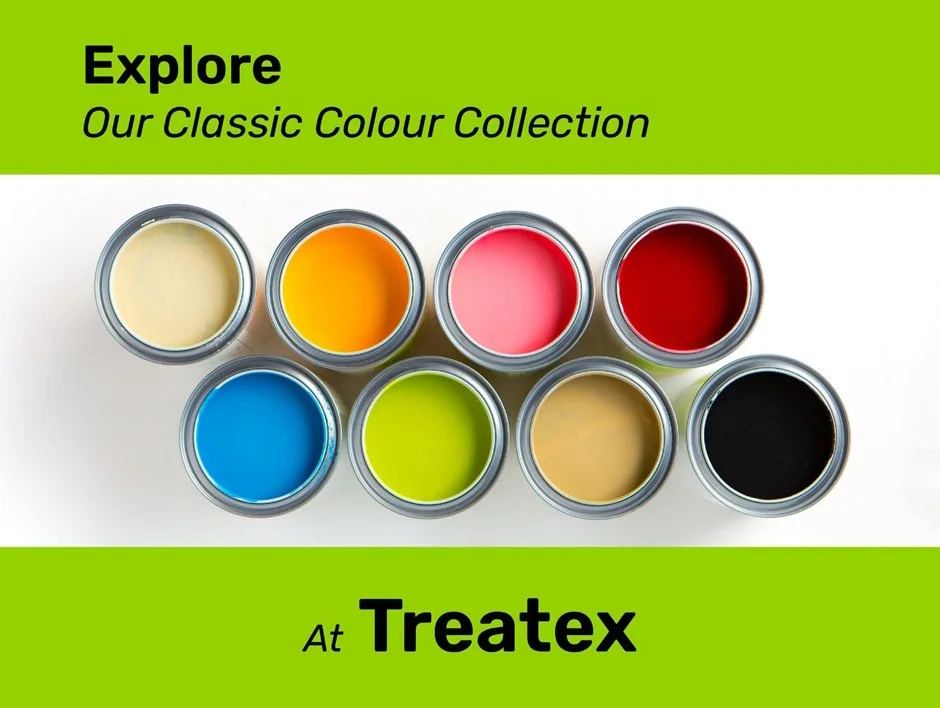Exploring Colour Tones: Choosing the Perfect Shade
Selecting the right colour tone for your wood surfaces can transform a space, bringing out the natural beauty of the wood while complementing your interior or exterior decor. Whether you're staining a new oak table or painting a garden fence, the colour tone you choose can have a profound effect on the look and feel of your home.
In this guide, we'll walk you through the essential steps to finding the perfect shade, using Treatex’s Colour Tone and Classic Colour Collection as inspiration, and help you choose the best colour for your wood surfaces.
1. Consider Your Home’s Style and Aesthetic
For a traditional or rustic setting, warm, earthy tones are ideal as they bring out the natural grain of the wood, creating a cosy and inviting atmosphere. In contrast, for a more contemporary or modern feel, sleek, neutral tones work wonders, offering a clean, polished look.
If you're aiming for a coastal vibe, consider Treatex’s Admiralty Grey. This soft, weathered shade evokes a light, breezy feel, perfect for a space that embraces natural light and airy decor. For a Mediterranean-inspired room, shades like Terracotta infuse warmth and character, creating an earthy palette that pairs beautifully with wood for a timeless look.
For those seeking a more luxurious and classic appearance, Burgundy Red is an excellent choice. This rich, deep colour adds sophistication and depth to wood finishes, making a statement while maintaining elegance.
Choosing a colour that suits your home’s style not only enhances the space but also ensures your wood tones complement other materials and textures.
2. Understand the Wood’s Natural Colour Tones
Every type of wood has its own distinct natural colour, which can either be complemented or enhanced by your choice of stain or paint. When selecting a colour for wood, consider the wood’s tone and grain to achieve the best effect.
Oak, known for its light, natural hues, can be enhanced with a subtle oak colour stain such as Light Oak or Medium Oak from Treatex’s Colour Tone range. These lighter tones highlight the natural grain and provide a timeless finish.
Darker woods, like mahogany or walnut, can handle deeper, more intense colours. Consider Ebony or Mahogany from Treatex for an elegant, bold finish that highlights the rich tones of the wood.
The key here is balance. Make sure to choose a shade that complements the wood’s natural colour to preserve its beauty, while still adding your personal touch.
3. Evaluate the Size and Lighting of the Space
Lighting plays a crucial role in how colours appear. The size of the space, combined with the amount of natural or artificial light, can dramatically alter how a colour tone looks once applied.
For smaller, darker rooms, you’ll want to use lighter shades that help reflect light and open up the space. Fresh Lemon from Treatex’s Classic Colour Collection is a bright, cheerful choice that can brighten up furniture in any corner.
For larger, well-lit spaces, deeper tones like Battleship Grey or Slate work beautifully to add depth and sophistication to wooden features without overwhelming the space.
Test different shades in the room’s lighting to ensure they provide the desired effect. What might look great in natural daylight may appear different under artificial light, so make sure to view your test samples at different times of the day.
4. Match or Contrast with Existing Furniture
When it comes to pairing your wood stain or paint with existing furniture, you can either match or contrast the tones. For a cohesive look, choose colours that are similar to your existing furniture or decor. If the majority of your furniture is in neutral tones, colours like Sage Green or Sea Mist can create a harmonious look that still adds personality to the space.
On the other hand, if you want to make a statement, go for a striking colour to create a contrast. Bolder shades like Midnight Blue or Poppy Red will stand out beautifully against lighter, neutral furniture, creating a focal point.
Balancing your wood tones with existing pieces will create a cohesive look, whether you choose to match, complement, or contrast.
5. Test Samples in Your Space
Finally, before committing to a full application, always test your colour samples in the actual space where they will be used. The colour can look very different once applied to a larger surface, especially depending on the lighting and surrounding decor.
Apply small test patches to various parts of the room and observe how the colour changes throughout the day with varying light conditions.
Ensure you are happy with how the colour interacts with your existing furniture, wall colours, and other elements in the space.
Taking the time to test different colour tones ensures you won’t be disappointed with the final result and that your wood surfaces look exactly as you imagined.
Find Your Perfect Shade with Treatex
Choosing the right Treatex colour tones for your wood surfaces doesn’t have to be overwhelming. With Treatex, you have access to an extensive range of paints and stains for wood, including the beautiful Classic Colour Collection and the versatile Colour Tones Ultra range. Whether you're looking for a bold statement with paints like Poppy Red, a calming hue like Sea Mist, or a timeless oak colour stain with shades like Light Oak or Dark Oak, Treatex offers a variety of options to suit every wood surface.
Explore Treatex’s full range of paints and stains for wood online to find the perfect colour for wood surfaces today. Experiment with our Treatex colour tones to see how the right shade can elevate your space and enhance your wood’s natural beauty!


